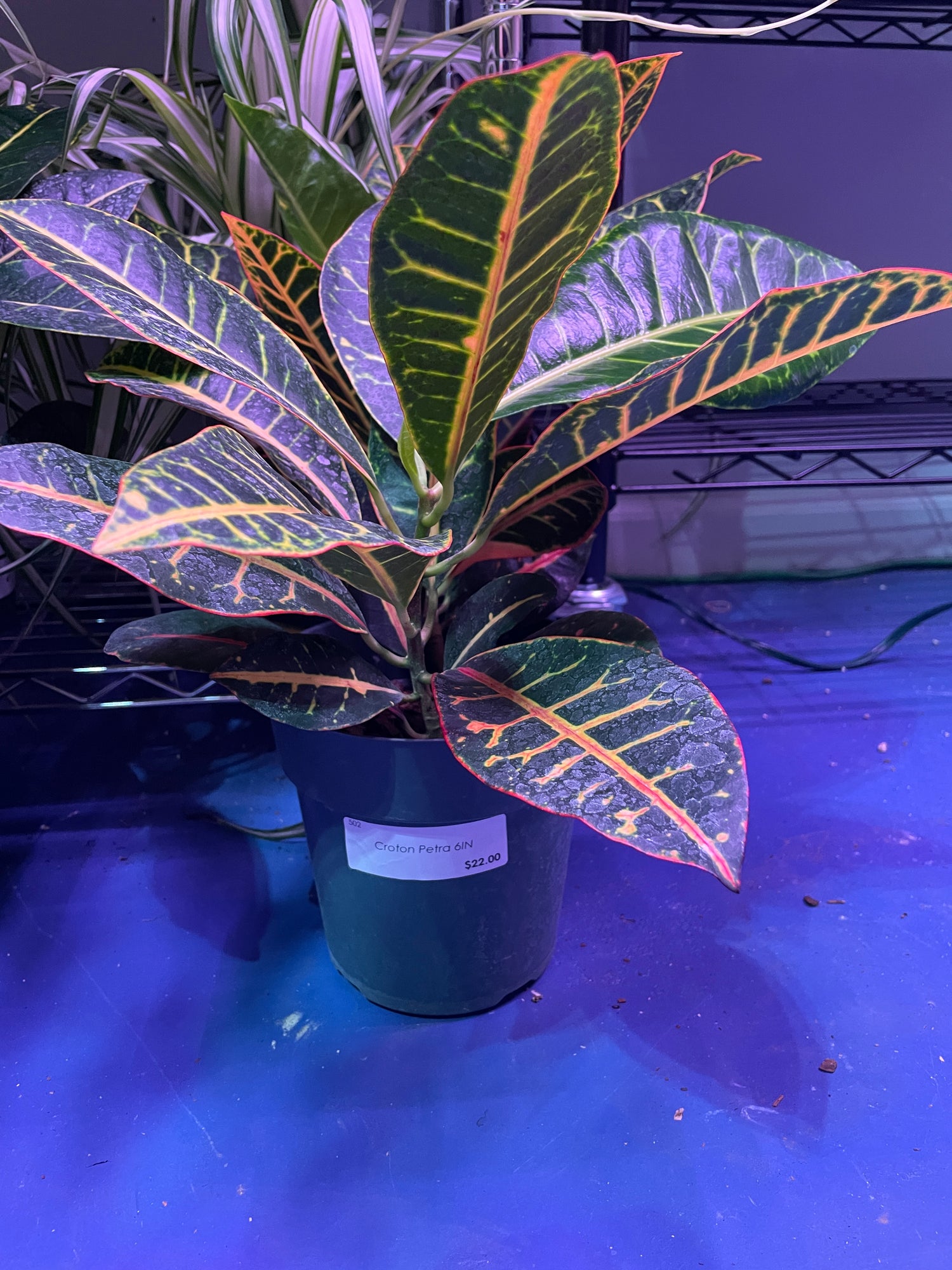Your Easy Guide to Crotons
By Plant Daddies of Atlanta
You may have heard of Croton plants only during the fall due to their colorful variegation, however, they make great plants year-round! They do have a reputation of being fussy, but in reality, if you know about caring for a croton plant properly, it can make for a resilient and hard-to-kill plant.
Croton’s are often grown outdoors in various tropical climates; but they also make excellent houseplants! There are a wide variety of Croton’s that come with different colors and leaf shapes; long, twisted, thin or thick leaves or colored from green to variegated, to yellow, red, orange and more. When considering a croton for your space, the more variegation and colorful the plant is, the brighter the light it will need.
Don’t fret if when you bring them home and some of the leaves fall off; this is normal behavior. Croton’s do not like to be moved a lot, so when they do get moved, they tend to go into shock which results in leaf loss. Don’t panic as if you continue the proper care, they will regrow within a short period of time. Since Croton’s are a tropical plant, they do benefit from high humidity: place a pebble tray under the pot, misting regularly or simply adding a humidifier will help keep it looking it’s best. It is also important to note that you should keep Croton’s away from drafts and the cold as they cannot tolerate temperatures below 60 degrees F.

A well-draining, moist soil that has been enriched with compost and some woody components is ideal for crotons. When it’s time to fertilize, the best times are the spring and summer months when houseplants are actively growing. A recommendation we like to use is Liqui-dirt; we have seen so much success with our houseplants and new growth have all been super healthy. It is recommended to slow down or stop fertilizing in the winter months as the plants do not do much growing.
Let’s talk about the leaves, sometimes you may notice that the colors of the leaves are fading or losing their color and reverting back to green. There are a few things that may be happening. Since crotons do best in bright light, it is common for them to lose color in the winter time and in very low light conditions. On the other hand, if they are exposed to excessive direct light, the colors will still fade from having the bright light directly on their leaves. With low light, they may not be receiving enough of the bright light they need to keep their colors so they revert back to green. You will need to adjust the light accordingly to make sure you’re not overwhelming your plant with too much or too little light.
Watering wise, it is best to keep them evenly moist in the summer. When the top couple of inches of soil is dry, it’s time to water. Be sure to fully soak your soil thoroughly and let the water drain out the bottom. If the soil is still moist, it’s best to hold off on watering (get a wood stake or even a chopstick and use that to see if watering is needed – like a cake, if batter comes out on the knife, it’s best keep cooking (to not water the plant), if it comes out clean, it’s time to take it out of the oven (it’s time to water); same with plants!). Remember, having the plant sit on a pebble tray, misting the plant or having a humidifier nearby will be ideal for best growing conditions.
For general maintenance, plants need a little bit of love. It’s always best to inspect your plants at least once a week to keep it looking fresh and to make sure any unwanted pests aren’t invading. Crotons respond well to trimming; removing unhealthy leaves and branches (but remember not to remove more than 1/3 of the stem at one time). It’s best to remove any dust from the leaves with a damp towel (pro tip: we suggest using neem oil as you’re already dusting off the leaves and this will help prevent unwanted pests) and gently wipe the top and bottom of the leaves. This will help make the plant look like new and help get the light they need.
All and all, Crotons are not as scary as they seem; they provide you with the joy of the colored leaves while still being a nice hearty plant to enjoy year round! Just remember, crotons are toxic to pets so be mindful of where you are placing them when you bring them home. 🌱





